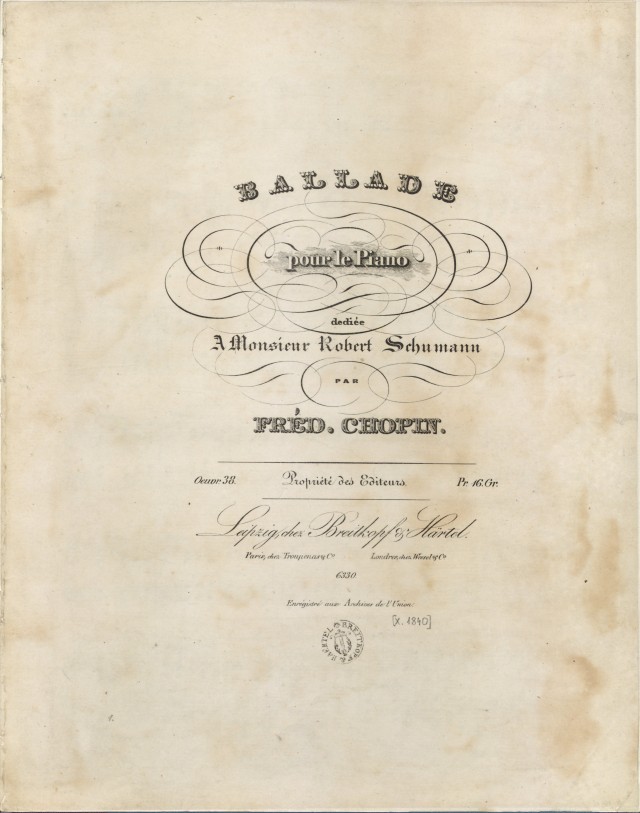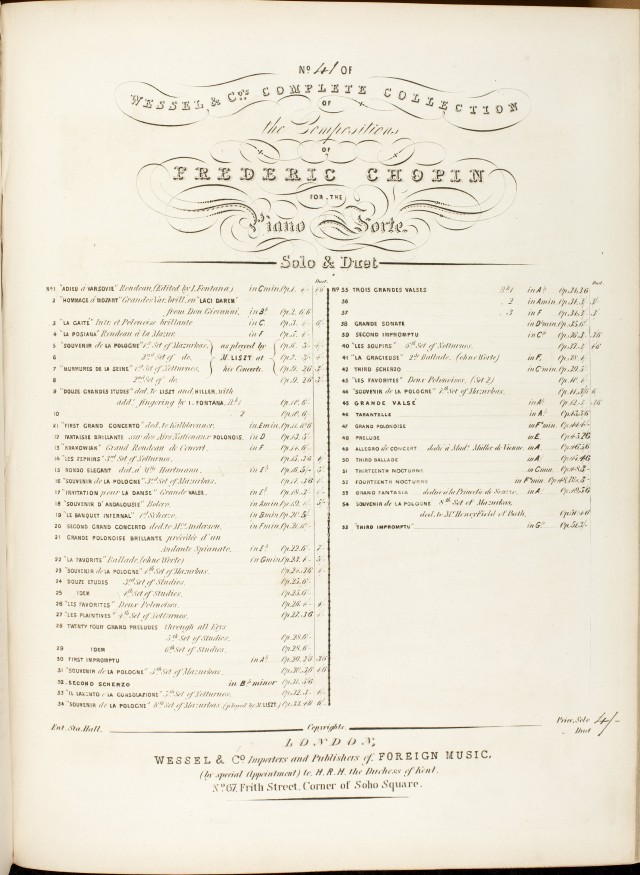



A - Autograph
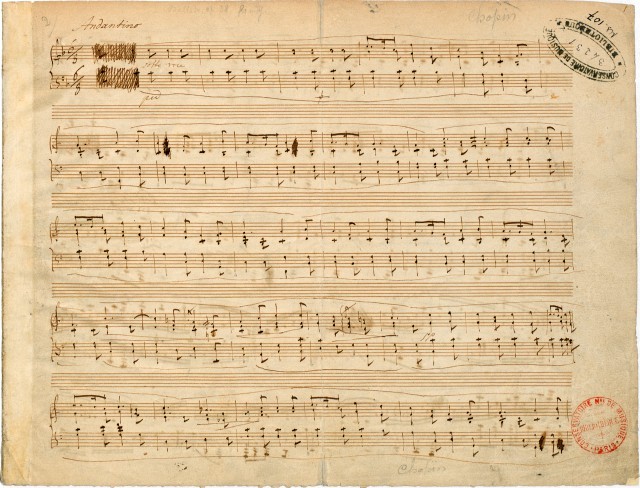
Stichvorlage, base text to the French and English edition.
GC - Gutmann's copy
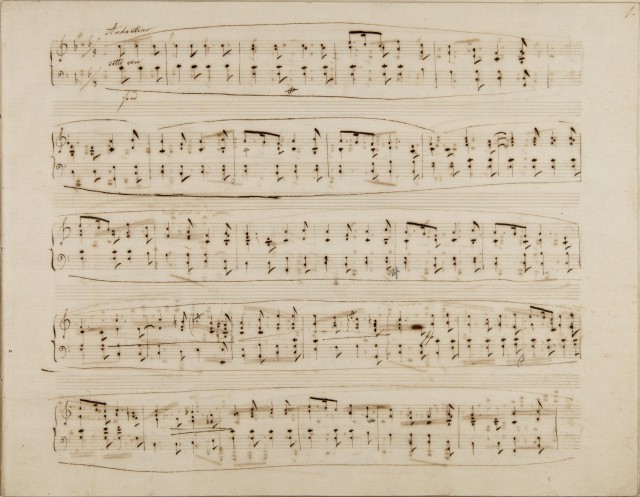
Stichvorlage copy performed by Chopin's pupil, Adolf Gutmann, base text to the German edition.
FE - French edition
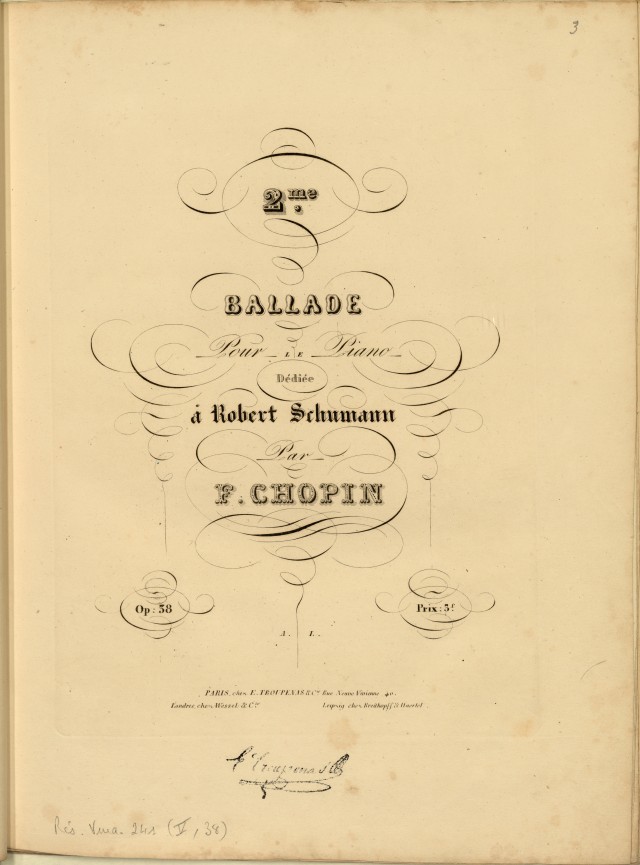
E. Troupenas & Co, Paris, plate number T.925:
FE1 – First French edition, X 1840,
FE2 – Corrected impression of FE1, end of 1840,
FE3 – Corrected impression of FE2, beginning of 1841,
Three copies with pencilled annotations, coming probably from Chopin:
FEJ – Copy belonging to Ludwika Jędrzejewicz,
FED – Copy belonging to Camille Dubois,
FES – Copy belonging to Jane Stirling.
GE - German edition
Filiation of the sources
The chronology of creation and filiation of sources of the Ballade in F major, Op. 38 do not leave major doubts. Although the first mentions of the Ballade come from 1836 (Robert Schumann’s memories from Chopin's stay in Leipzig), the information about the works on the manuscript date back only to Chopin’s stay in Mallorca – Chopin announces sending the Ballade’s manuscript to Paris in the letters to Fontana from the beginning of 1839. Eventually, Chopin finished the works on the piece in summer 1839 in Nohant. The autograph (A) served as base text for two parallel editions: French (FE1) and English (EE1). The copy prepared by Adolf Gutmann (GC), used as base text for the German edition (GE1), was also created on its basis. Chopin introduced a few changes into the copy; he also completed the pedalling and dynamics. FE1 is full of mistakes (the impression probably included only a few copies which were not distributed); therefore, immediately – still in 1840 – the second impression (FE2) was published, in the preparation of which Chopin’s proofreading was taken into consideration. However, the composer’s participation in the creation of the subsequent third impression (FE3) raises serious doubts.
Among the preserved sources of the Ballade, one should also mention two sources written by Chopin’s hand which are of no significance for the determination of the text. One of them is a sketch, being an entry in the diary of Ivar Hallström, a Swedish composer, including a two-bar segment of the main theme (Musik- och teatermuseet, Stockholm). The second of the mentioned sources is a three-bar incipit written and signed by Chopin in a list of his compositions prepared mostly by Auguste Franchomme, and located in the collection including i.a. FES (Bibliothèque Nationale de France, Paris).
Principles behind the main text of
the Ballade in F major Op. 38
We adopt A as the base, taking into account the changes introduced by Chopin in GC and FE2. We also take into account Chopin’s annotations in pupil’s copies.

